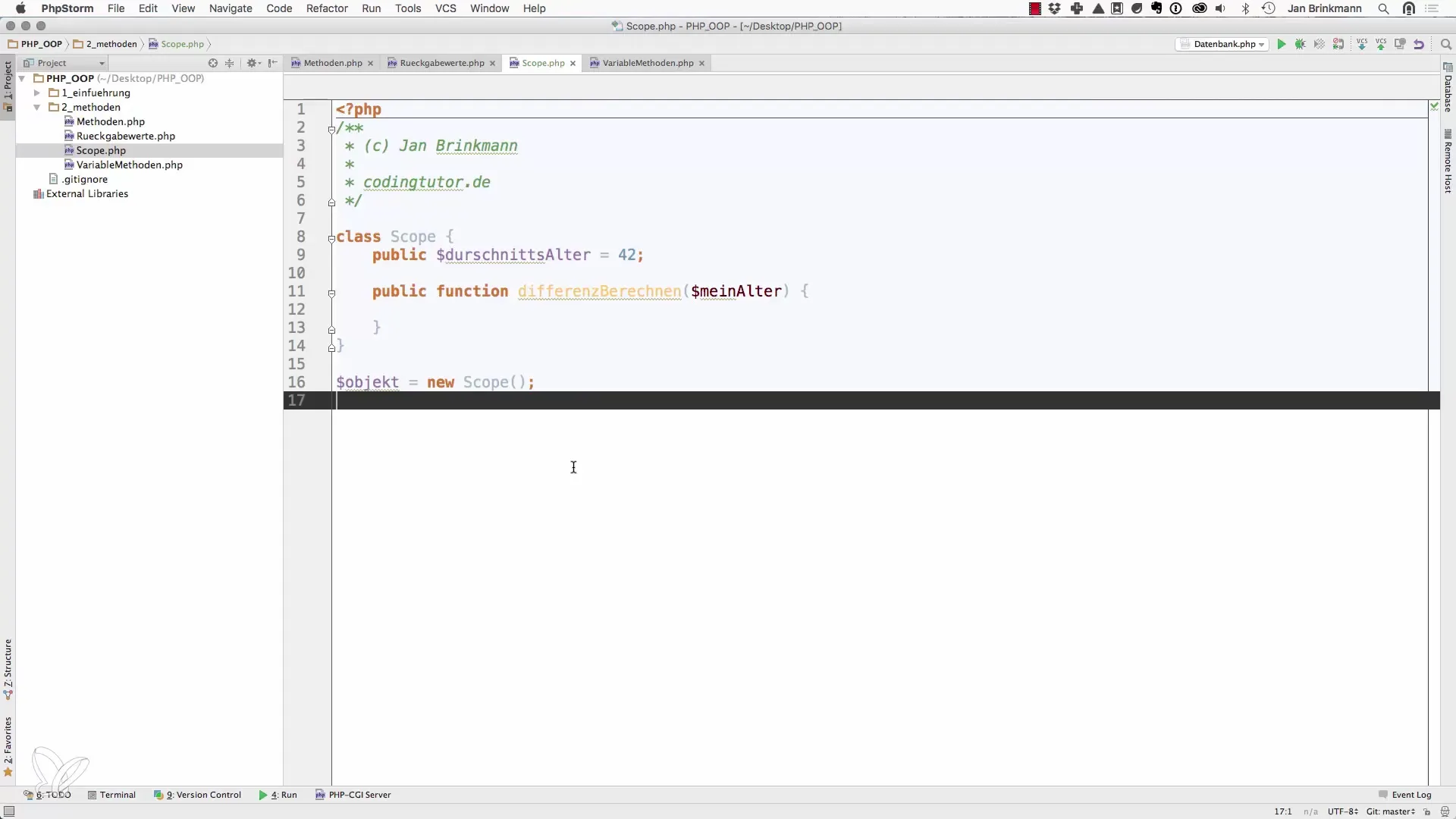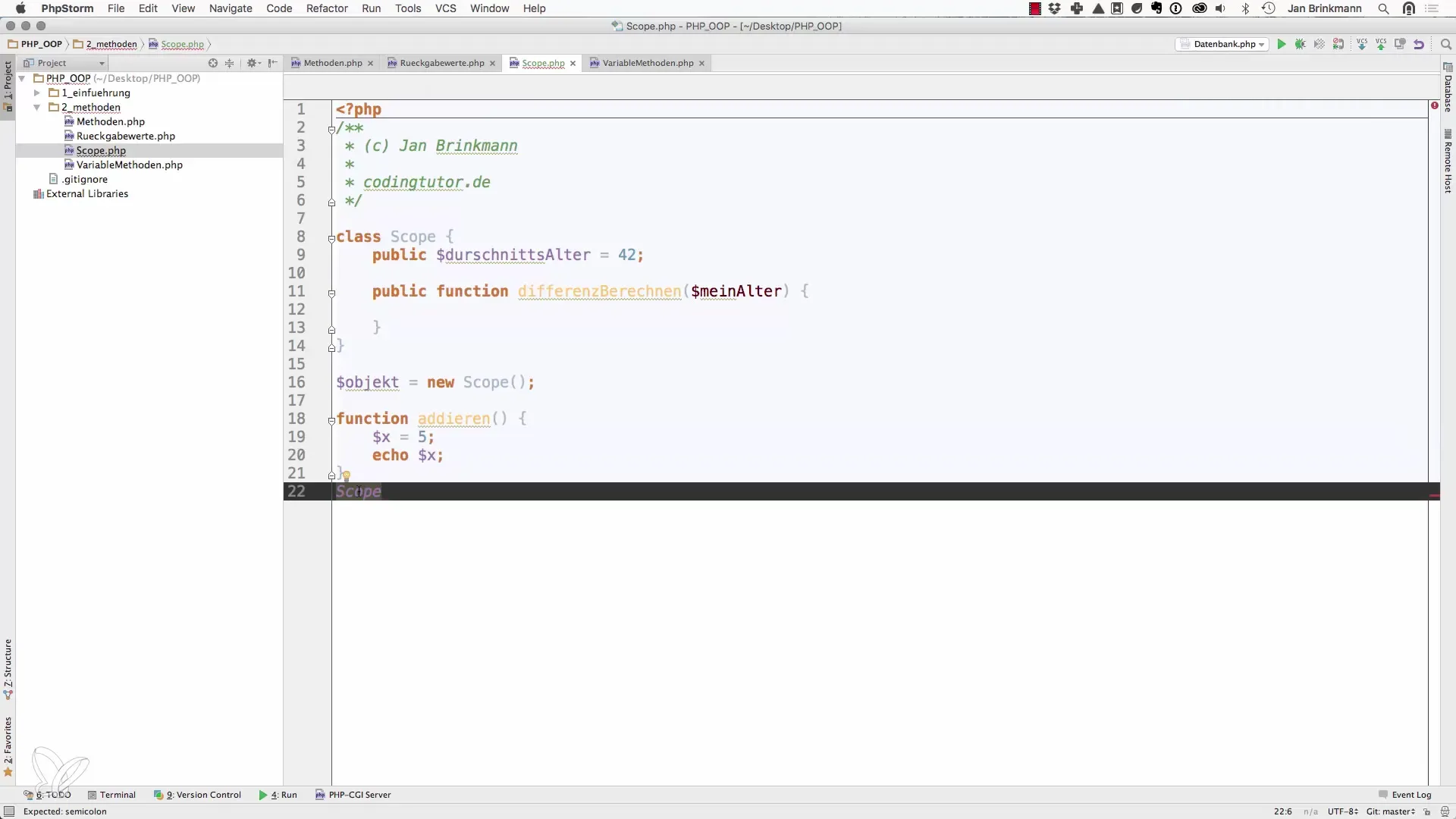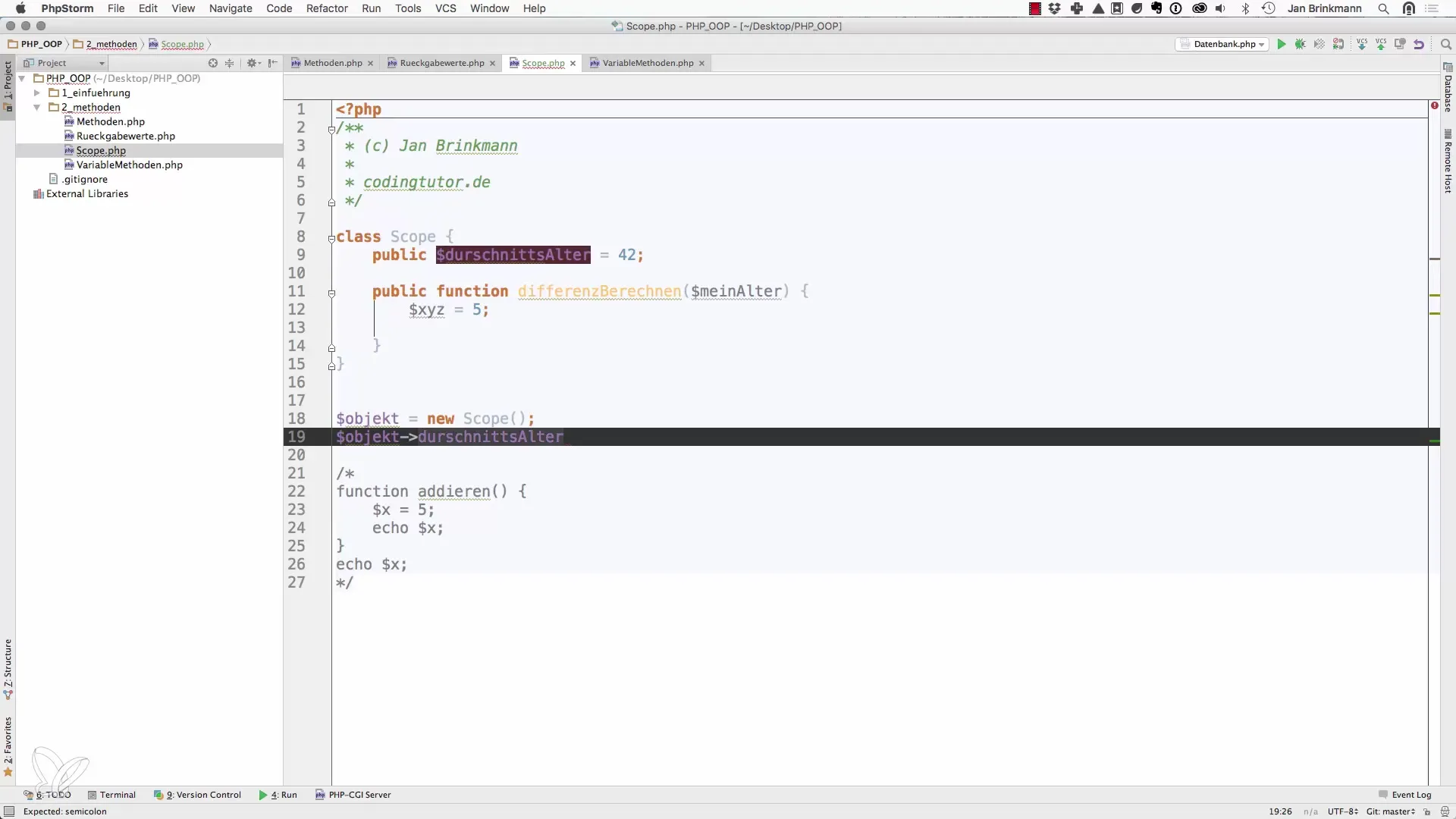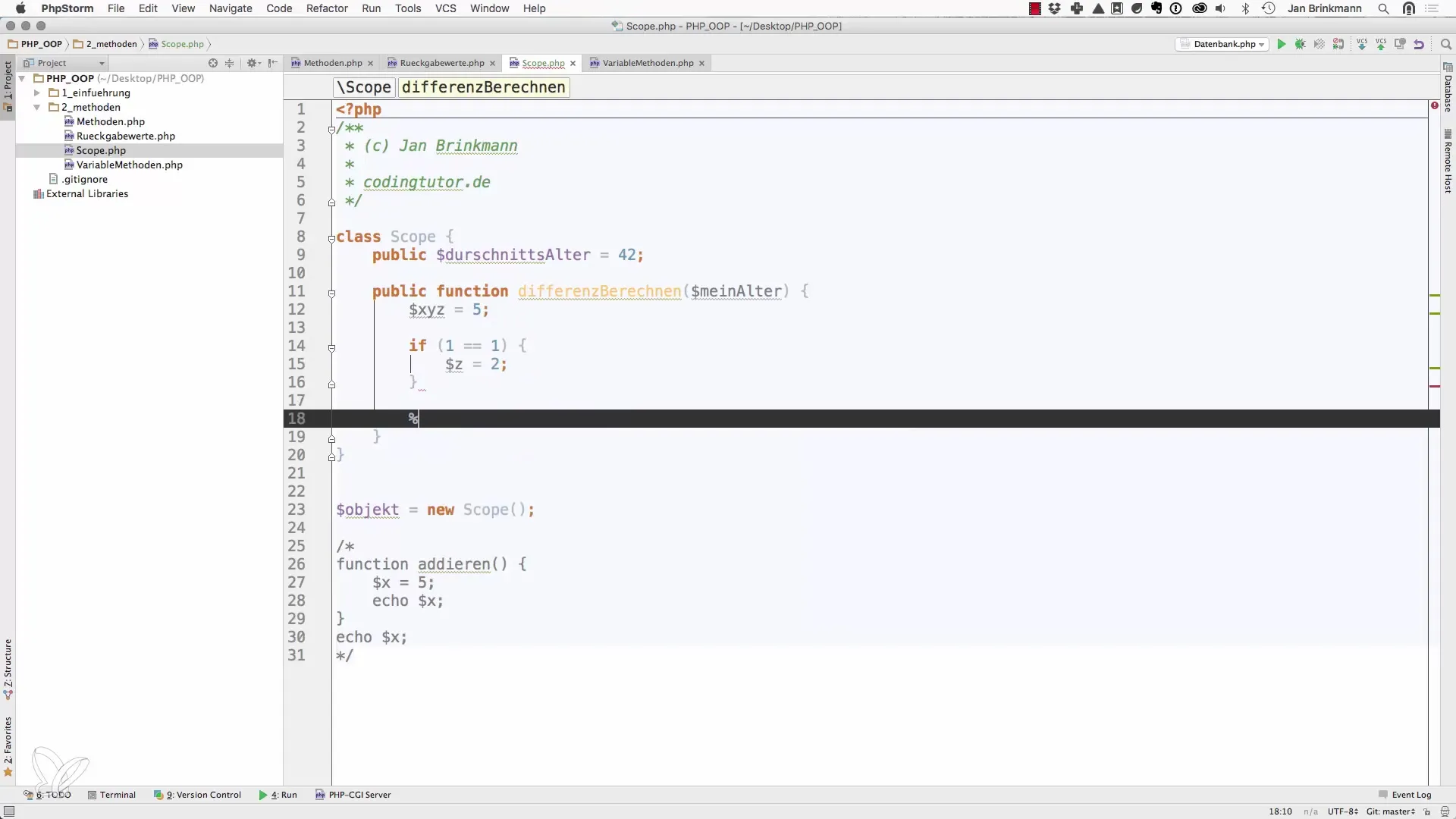Whether you are an experienced developer or just diving into the world of object-oriented programming, mastering scopes is crucial for the success of your projects. These scopes determine where a variable or method is accessible within your code. This guide will provide you with the fundamental insights into scopes in classes and objects in PHP, so you can work confidently and effectively.
Key Insights
The scopes in PHP determine in what context variables and functions exist. Within methods, classes, and other structures, variables have different visibility. Furthermore, access to class properties and methods is only possible through special syntax.
Step-by-Step Guide
Basic Understanding of Scope
To start, you should understand that the scope in PHP determines where variables can be declared and used. For example, if you define a variable within a function, it is not accessible outside of that function.

Example of a Function
A simple example to illustrate the differences: You can declare a variable x within a function and assign it a value, such as 5. Within the function, you can access this variable, but it will not be recognized outside. This means if you try to output this variable using echo x; within a method, an error will appear since the variable exists in a different scope.
Scopes in Objects
The principles of scopes also apply to objects. For example, if you define a new variable xyz within a method, it will also only be available within that method.

Visibility of Properties
Class properties must be explicitly declared to be accessible. For example, if you have a property averageAge, you can only access it through the object, not directly. This means you need to use the expression myObject->averageAge to get the value.

Scope in Conditions and Loops
In PHP, there is no special scope for conditionals like if or loops. This means that variables declared in a condition or loop are also available outside of them. So, if you define a variable z within an if statement, it remains accessible afterwards.

Conclusion on Scope
In summary, variables in PHP exist within the scopes defined by functions, methods, and classes. Changes or accesses to variables outside of their declaration lead to errors. In many cases, access to objects and properties is restricted to their associated methods.
Summary - Scopes in Object-Oriented Programming with PHP
In this guide, you have received an overview of scopes in PHP. You have learned that access to variables is closely linked to their declaration context and how this affects the functioning of classes and objects. A clear understanding of these concepts will help you program with fewer errors and more efficiently.
Frequently Asked Questions
What are scopes in PHP?Scopes define where variables and functions are visible and accessible within the code.
Can I access a variable declared in a function outside of that function?No, variables declared within a function are not accessible outside of that function.
How do I access the properties of an object?To access the properties of an object, you must use the syntax myObject->property.
Are there scopes for conditional statements in PHP?No, there is no special scope for conditions in PHP; variables remain accessible outside of the conditions as well.
What happens if I try to access an undefined variable?You will receive an error that the variable is not recognized or undefined.


